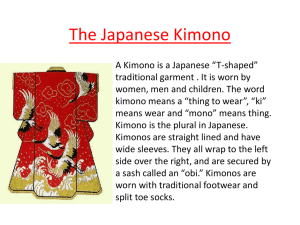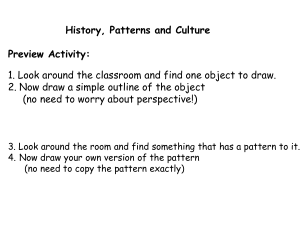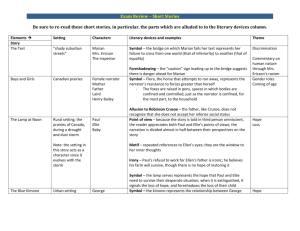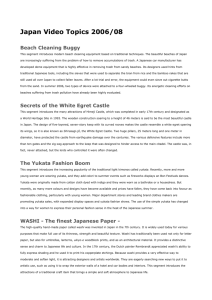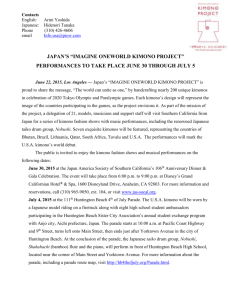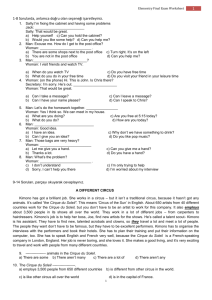My grandmother, Masue Sato, was a seamstress in Japan. She... amazing lady who lived through WWII. She was very talented...
advertisement
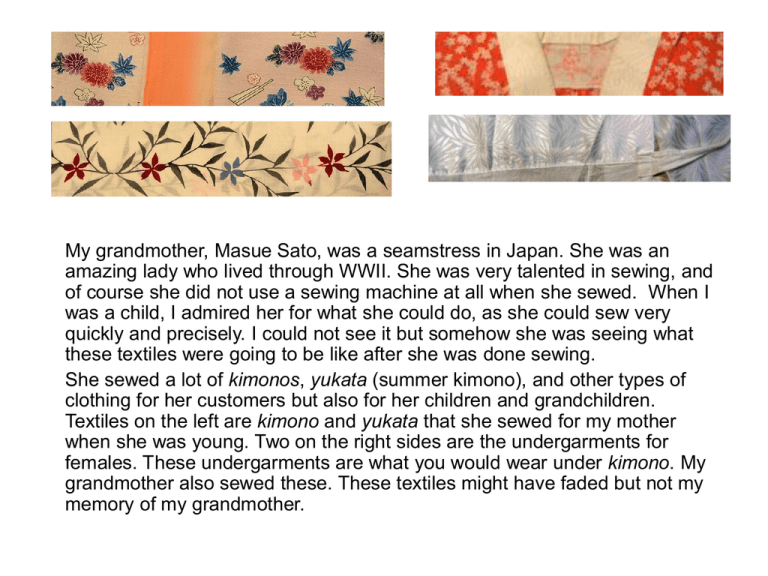
My grandmother, Masue Sato, was a seamstress in Japan. She was an amazing lady who lived through WWII. She was very talented in sewing, and of course she did not use a sewing machine at all when she sewed. When I was a child, I admired her for what she could do, as she could sew very quickly and precisely. I could not see it but somehow she was seeing what these textiles were going to be like after she was done sewing. She sewed a lot of kimonos, yukata (summer kimono), and other types of clothing for her customers but also for her children and grandchildren. Textiles on the left are kimono and yukata that she sewed for my mother when she was young. Two on the right sides are the undergarments for females. These undergarments are what you would wear under kimono. My grandmother also sewed these. These textiles might have faded but not my memory of my grandmother. These are all pictures of obi, waist bands for kimono and yukata. They are all made of silk. One on the left is for kimono and is a little more fancy with detailed embroidery. The ones on the right are for yukata. I don’t know the origin of it but it seems like my mother had it for a long time (well, I will have to ask her). In Japan, it used to be that when a daughter is marrying into her husband’s family, her mother or grandmother would give their Kimonos, so she could take them with her. My mother said that I could keep them when I left Japan. I wore my kimono and yukata with these obi on several occasions. I thought I would not need it in the United States when I came here to study in the graduate school, but mother knows the best. In actuality, it turned out to be handy to have them for many of the International Festivals that I’ve participated in. This is yukata (summer kimono) for male and the textile in the middle is obi (waist band). When I took my partner, David, to my parents’ home in Japan, my parents bought this for him. These are pictures of omamori (charms) that people in Japan would obtain from Jinjya (Shinto Shrine). One on the left is for being successful in studying and finding a job (I know…. your wishes can be very specific). My parents got one for me when I was about to be done with graduate school. The one on the left is for a couple, and typically a wife would carry the red one and a husband would carry a blue one. Hakutsuru, white cranes, are embroiled in these charms, as they symbolize the a happy long relationship between the husband and the wife.
